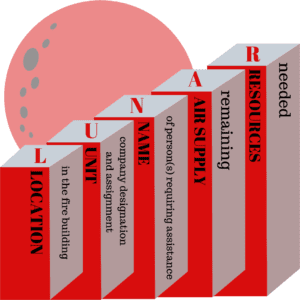I am a big advocate of departments having standardized procedures to guide operations as tools to help develop and maintain situational awareness. I don’t really care if you call them Standard Operating Procedures (SOPs) or Standard Operating Guidelines (SOGs). The important thing is you have a set of commonly understood Standards that guide performance.
Standards are especially beneficial in high-stress, high-consequence situations that first responders often find themselves in. However, the very Standards that are written to keep first responders safe can also contribute to catastrophic outcomes. Here’s how…
 Oftentimes department training officers set up scenarios where responders perform to the scripted SOP. Nothing wrong with that. However, the training scenarios that are developed by well-intended training officers don’t always result in success. And, as all first responders know, the complexity of the incident can often require actions that are not consistent with the Standards.
Oftentimes department training officers set up scenarios where responders perform to the scripted SOP. Nothing wrong with that. However, the training scenarios that are developed by well-intended training officers don’t always result in success. And, as all first responders know, the complexity of the incident can often require actions that are not consistent with the Standards.
Here’s an example. A department has a Mayday Standard and a Rapid Intervention Standard. The training staff develops an evolution where a crew member gets into trouble and calls a Mayday. In the Mayday report, the distressed crew member provides a LUNAR Report:
L-location, in the fire building
U-unit, company designation and assignment
N-name(s), of person(s) requiring assistance
A-air supply, remaining
R-resources, needed
The Rapid Intervention Team springs into action, locating the distressed firefighter and helping them to safety. The drill is repeated several times to ensure competency.
In my Fireground Mistakes and Best Practices program, I ask firefighters if they have participated in training evolutions like this and many acknowledge they have. That gives me encouragement.
Then, I ask the firefighters how many times the distressed firefighters gave incomplete LUNAR reports, inaccurate LUNAR reports, or no LUNAR reports during the training evolution. Silence befalls the room. The evolutions always have the distressed crews giving LUNAR reports and they are always complete and accurate. That’s too bad. Because the harsh reality of the real world is complete and accurate information may not be provided.
If you do not build failure into your evolutions, you may be training for failure. And the worst part about it… you may not even realize you’re heading toward disaster because you’re so focused on training for success.
In my Mental Management of Emergencies program, I demonstrate, through a series of exercises, that stress can cause a person to leave out important details and, incredibly, makeup information. I don’t want to say they lie, but they can say some things that are pretty outlandish. Anyone who’s attended the Mental Management program knows what I’m talking about. We can have fun in the classroom demonstrating the shortcomings of the stressed brain but on the emergency scene, it can be catastrophic.
Dr. Gasaway’s Advice
 It is important that Mayday and RIT practices include evolutions in which information is incomplete or inaccurate so that crews learn how to improvise. The buzz word for this is Managing the Unexpected. I call it being a Resilient Problem Solver. Call it what you will, but responders need to be able to think quickly on their feet when things are not going according to plan (as often happens during a Mayday).
It is important that Mayday and RIT practices include evolutions in which information is incomplete or inaccurate so that crews learn how to improvise. The buzz word for this is Managing the Unexpected. I call it being a Resilient Problem Solver. Call it what you will, but responders need to be able to think quickly on their feet when things are not going according to plan (as often happens during a Mayday).
The more they practice solving novel problems in training, the better they will become at solving novel problems in real emergencies.
In an upcoming article, I’m going to share with you why you’ll want to be sure failure is built into training evolutions. Here’s a hint: It’s not to give supervisors a reason to discipline or responders a reason to have low self-esteem, it’s to rewire the brain for success! Stay tuned…
 Action Items
Action Items
1. Does your department have Mayday and Rapid Intervention Standards?
2. How often do you practice performing rescues?
3. How does your department build complexity into your Mayday and Rapid Intervention evolutions?
_____________________________________________________

If you are interested in taking your understanding of situational awareness and high-risk decision making to a higher level, check out the Situational Awareness Matters Online Academy.
CLICK HERE for details, enrollment options and pricing.
__________________________________
Share your comments on this article in the “Leave a Reply” box below. If you want to send me incident pictures, videos or have an idea you’d like me to research and write about, contact me. I really enjoy getting feedback and supportive messages from fellow first responders. It gives me the energy to work harder for you.
Thanks,

Email: Support@RichGasaway.com
Phone: 612-548-4424
SAMatters Online Academy
Facebook Fan Page: www.facebook.com/SAMatters
Twitter: @SAMatters
LinkedIn: Rich Gasaway
Instagram: sa_matters
YouTube: SAMattersTV
iTunes: SAMatters Radio
iHeart Radio: SAMatters Radio
